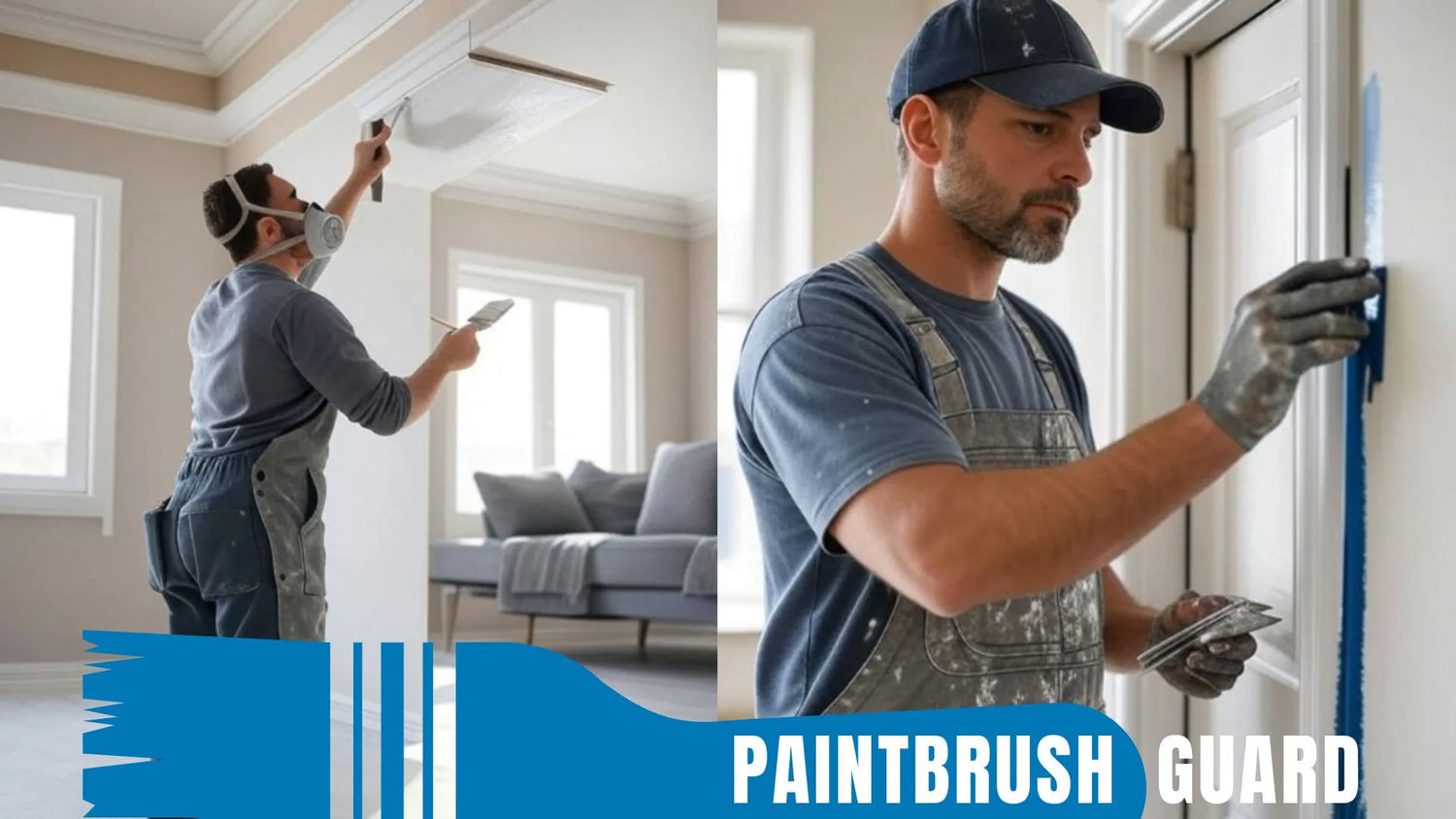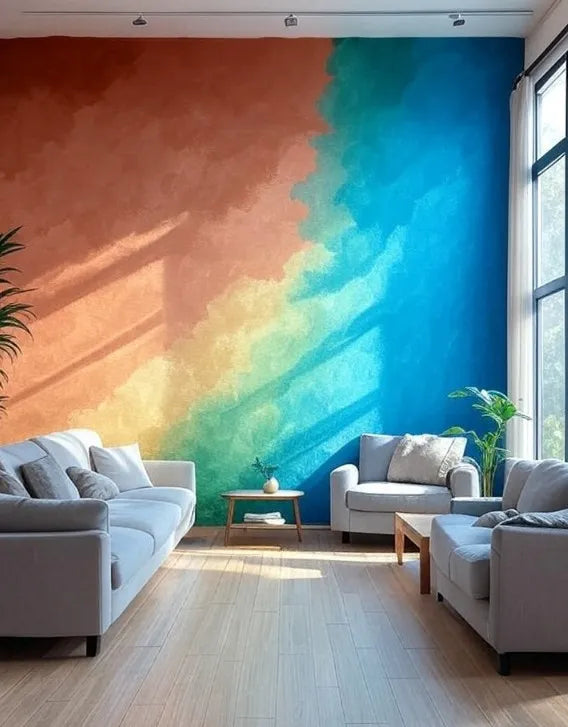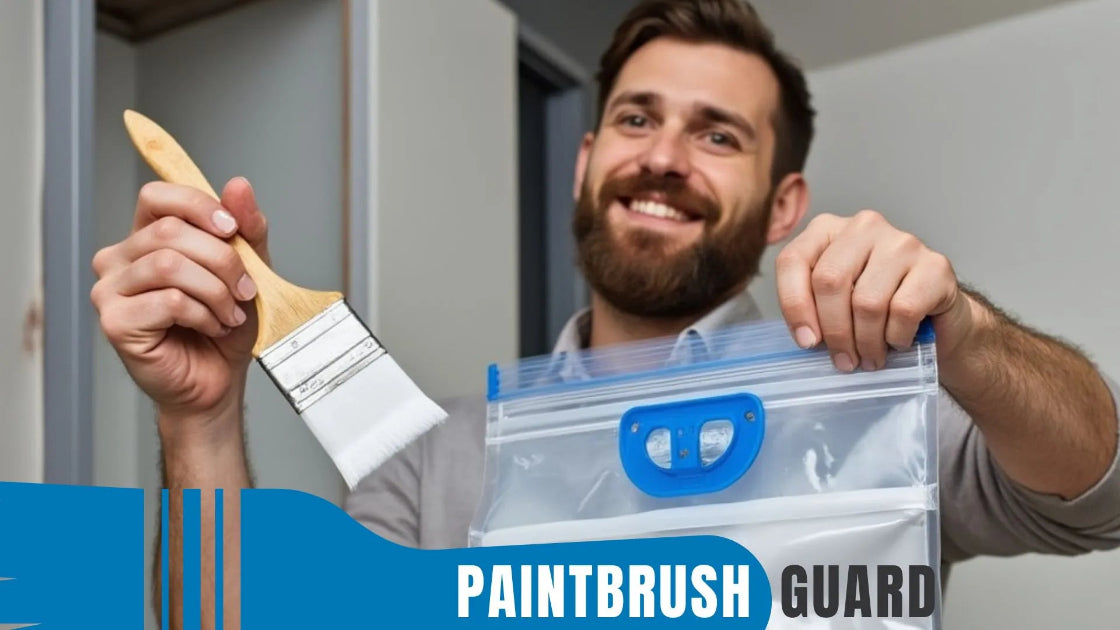
Is Painting Exterior Brick a Good Idea? Pros, Cons and Tips
|
Time to read 11 min
|
Time to read 11 min
Painting exterior brick can enhance curb appeal, protect against weather, and offer a cost-effective update. However, it’s a permanent choice requiring maintenance and may trap moisture if done incorrectly.
Consider brick condition, climate, and paint quality before deciding. Weigh pros like customization against cons like irreversibility to determine if painting brick suits your home.
This in depth guide covers every aspect from inspection to priming and brick painting for homeowners taking on a large house brick painting project.
Painting exterior brick can transform your home’s appearance, offering a fresh, modern look. Whether you’re aiming to boost curb appeal or align with current design trends, painting brick can be an effective solution. Here are some benefits driving homeowner interest in this project.
These advantages highlight why painting exterior brick appeals to many homeowners. However, potential downsides also need consideration.
With no cleanup required after a painting session, you can take a short break mid-project or wrap up your painting for the day, your brush stays ready without the need to clean.
Before deciding to paint your brick, weigh the challenges. Painting is a long-term commitment, and reversing it can be difficult. Here are key drawbacks to understand:
Pros of Painting Exterior Brick |
Cons of Painting Exterior Brick |
Enhances curb appeal |
Requires regular maintenance |
Customizable color options |
Difficult to reverse |
Protects against weather |
May trap moisture |
Cost-effective update |
Could impact home value |
These factors help clarify whether painting brick aligns with your goals.
This article explores is it better to spray or roll exterior paint on brick, comparing the two methods to guide your decision.
To determine if painting exterior brick is suitable and achieve a durable, professional finish that lasts for years, follow these detailed steps to evaluate key factors and execute the painting process effectively.
Tailor your paint and sealer choices to your region’s weather to maximize performance. In humid or rainy areas, prioritize breathable paints and sealers with mildew inhibitors to prevent moisture buildup and mold.
In dry, sunny regions, select paints with enhanced UV protection to resist fading and cracking.
For coastal areas, use products resistant to salt corrosion. Check weather forecasts to avoid painting during wet, windy, or extreme conditions.
Research local trends by observing nearby homes or searching “painted brick homes near me” to choose colors that enhance curb appeal and marketability (e.g., neutral tones like white or gray).
If in a homeowners’ association, contact the board to verify that painting brick is permitted and complies with color or material restrictions, ensuring your project aligns with community standards.
Read our exterior house painting guide: This mega guide gives you clear tips, tools and methods on how to paint all exterior surfaces on your home.
Begin by thoroughly examining the brick for damage, cracks, moisture issues, or efflorescence (white, powdery deposits from mineral salts).
Use a flashlight to check shaded areas and tap bricks with a screwdriver to detect hollow or loose sections, indicating potential damage.
If cracks, spalling, or significant moisture stains are present, painting may trap moisture and worsen decay, leading to costly repairs.
For minor cracks, apply masonry sealant later in the process, but for extensive damage or persistent moisture (e.g., damp spots after dry weather), consult a professional mason to repair or replace affected areas before proceeding.
This ensures the brick is structurally sound and ready for painting, preventing future issues.
Remove dirt, mildew, and efflorescence to create a clean surface for painting. Use a pressure washer on a low setting (1500–2000 PSI) to avoid damaging the brick, holding the nozzle 12–18 inches away at a 45-degree angle.
Alternatively, scrub with a stiff nylon brush and a mild detergent solution (e.g., 1 part bleach to 3 parts water for mildew). Rinse thoroughly with clean water to eliminate all residue, ensuring no soap or debris remains.
Allow the brick to dry completely for 24–48 hours, using a moisture meter to confirm the moisture content is below 12%.
Check for any remaining efflorescence, as it can reappear if not fully removed. This step prevents adhesion issues and moisture trapping, which can cause paint to peel or bubble.
This article explores what color brick makes a house look bigger, offering insights into brick paint options, color psychology, and practical tips to achieve a larger look.
Inspect the brick for cracks, loose mortar, or damaged areas after cleaning. Use a chisel or wire brush to remove crumbling mortar, and repoint with a premixed mortar (available at hardware stores), matching the existing mortar’s color and texture for a seamless appearance.
Apply mortar with a trowel, pressing firmly and smoothing with a jointing tool. For cracks in bricks, use a masonry sealant or exterior-grade caulk applied with a caulking gun, smoothing with a putty knife to create a flush surface.
Replace severely damaged bricks by carefully chiseling them out and installing new ones, securing with mortar.
Sand rough areas with a masonry sanding block to ensure a smooth surface, then wipe down with a damp cloth to remove dust. This creates an even base for priming and painting, preventing patchy results.
Select a high-quality, masonry-specific primer designed for brick to seal its porous surface and enhance paint adhesion, ensuring a uniform finish.
Choose an alkali-resistant primer to withstand brick’s high pH levels, preventing chemical reactions that weaken the paint.
Use a synthetic brush for edges, corners, and mortar joints, and a heavy-nap roller (¾-inch or thicker) for larger areas to apply one even coat, covering all surfaces thoroughly.
Work in small sections to avoid drying lines, and apply in mild weather (50–85°F, low humidity) to ensure proper curing.
Check the label for drying time, typically 4–24 hours, and confirm the surface is dry and non-tacky before painting. This step reduces uneven paint absorption and minimizes the risk of peeling or flaking over time.
This article explains whether you need to prime exterior brick before painting, covering benefits, exceptions, and practical steps for a professional result.
Select an exterior-grade, breathable paint, such as masonry or elastomeric paint, formulated for brick to allow moisture to escape, preventing mold, mildew, or brick damage.
Avoid standard latex or oil-based paints, which trap moisture and cause bubbling. Masonry paint offers a smooth, durable finish, while elastomeric paint is thicker and more flexible, ideal for filling minor cracks in variable climates.
Choose a paint with UV resistance and mildew inhibitors, labeled for exterior brick use. Stir the paint thoroughly, and apply two thin, even coats using a heavy-nap roller for large areas and a synthetic brush for mortar joints or corners.
Work in 3x3-foot sections to maintain a wet edge, avoiding lap marks. Paint in mild weather, avoiding direct sunlight, high humidity, or temperatures below 50°F (10°C) or above 90°F (32°C).
Allow the first coat to dry for 4–6 hours (per label), lightly sand with 220-grit sandpaper to remove imperfections, and wipe clean before applying the second coat for full coverage and a professional finish.
This article explores how long will painted brick last, the key influences on its durability, and practical steps to keep it in top shape.
Protect the painted brick by applying a breathable, exterior-grade masonry sealer to guard against moisture, UV rays, and environmental wear, significantly extending the paint’s lifespan.
Avoid non-porous sealants that trap moisture, as they can damage brick.
Use a sprayer or brush to apply a thin, even coat, following the brick’s texture to prevent streaks or pooling.
Apply in mild weather (50–85°F, low humidity) for optimal curing, and allow 24 hours of drying time, or as specified on the label, before exposing the surface to rain or heavy use.
Ensure proper ventilation during application to avoid inhaling fumes. This step adds a critical protective barrier, especially in harsh climates, ensuring long-term durability.
These steps ensure you select the right paint and achieve a durable, attractive finish on exterior brick, delivering a professional result that withstands the elements.
Exterior brick painting: This article explores what is the downside of painting brick, shedding light on the challenges of brick painting to help you make an informed choice.
If you’re hesitant about painting brick, consider these alternatives for a refreshed look without permanence:
These options may suit you if painting feels too permanent.
Discover how house paint colors influence mood & get expert tips on choosing the best colors for every room to create a vibrant, harmonious home environment.
A common concern is how painting brick impacts home value. This depends on your local housing market and buyer preferences.
In some markets, painted brick homes are desirable, especially with modern trends.
In areas valuing traditional brick, painting might reduce appeal. Choose neutral colors like white, gray, or black for broader marketability.
Painting exterior brick can enhance your home’s appearance , protect the brick, and provide a cost-effective update.
However, it’s a permanent decision requiring careful planning to avoid issues like moisture damage or reduced home value.
This article has explored the benefits, drawbacks, and alternatives, helping you determine if painting brick aligns with your goals.
By weighing these factors and preparing properly, you can make an informed choice about transforming your home’s exterior.
This article dives into is it better to paint or stain exterior brick, comparing brick paint and stain to guide your decision.
Painting exterior brick enhances curb appeal with a modern, vibrant look, offers customizable color options to match your style, protects against moisture, UV rays, and environmental wear, and provides a cost-effective update compared to replacing brick or siding, making it an attractive option for home improvement.
Painting exterior brick requires regular maintenance with touch-ups or repainting every 5–15 years, is difficult and costly to reverse, may trap moisture if low-quality or non-breathable paint is used, leading to mold or brick damage, and could reduce home value in markets preferring natural brick.
Inspect and clean brick with a pressure washer or brush, dry for 24–48 hours, repair cracks with mortar or caulk, and apply a masonry-specific primer. Use two coats of breathable masonry or elastomeric paint with a heavy-nap roller and brush, drying 4–6 hours between coats, and seal with a breathable masonry finish for protection.
Alternatives include whitewashing for a softer, less permanent look, limewashing for a breathable, removable weathered finish, staining to enhance brick texture while preserving breathability, and cleaning or sandblasting to restore the brick’s original appearance without the permanence of paint.
Painting exterior brick can boost home value in markets favoring modern aesthetics but may deter buyers who prefer natural brick in traditional areas. Choose neutral colors like white or gray for broader appeal, check local market trends, and ensure compliance with homeowners’ association rules to maximize marketability. benefits of sealing brick restoration techniques
Learn more about brick painting:
This article has explored the benefits, drawbacks, and alternatives, helping you determine if painting brick aligns with your goals.
Learn more about brick color:
This article explores what is the best color to paint brick, offering options and advice to help you achieve a stunning look with brick painting.
Learn more about exterior brick paint types: The wrong paint can trap moisture, damage brick, or peel quickly, leading to costly repairs. Here are key reasons to focus on paint type when painting brick exteriors.

Learn about eco-friendly painting, tips and tutorials on house interior and exterior surfaces, so you can get started with your project without any surprices during or after your painting.

Learn how interior house paint colors influence mood with expert tips on room preference so you can pick the best colors for a harmonious home environment.
We focus on the most popular shades for each interior colors, so you don't miss no matter what color you pick.

Learn how this innovative tool allows you to store paintbrushes without the need for immediate cleaning, offering significant advantages in time savings, water conservation, reduced chemical pollution, and lower costs for supplies.







